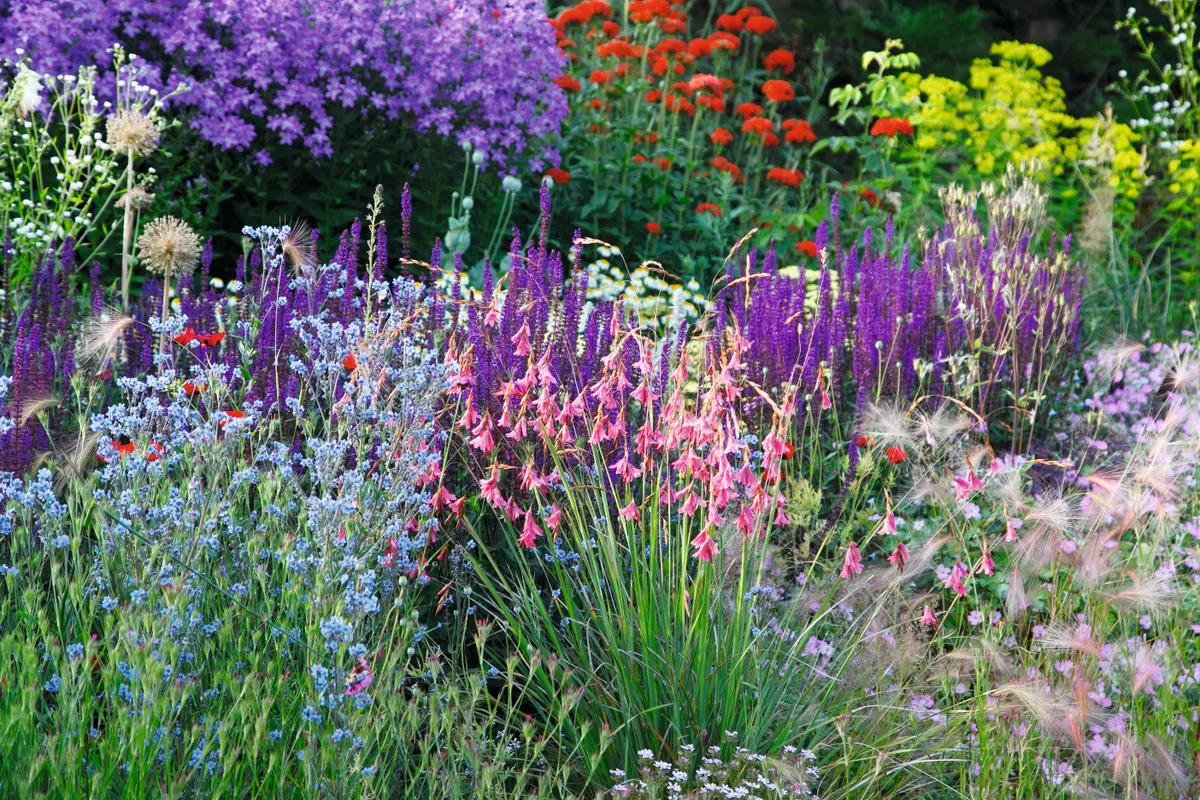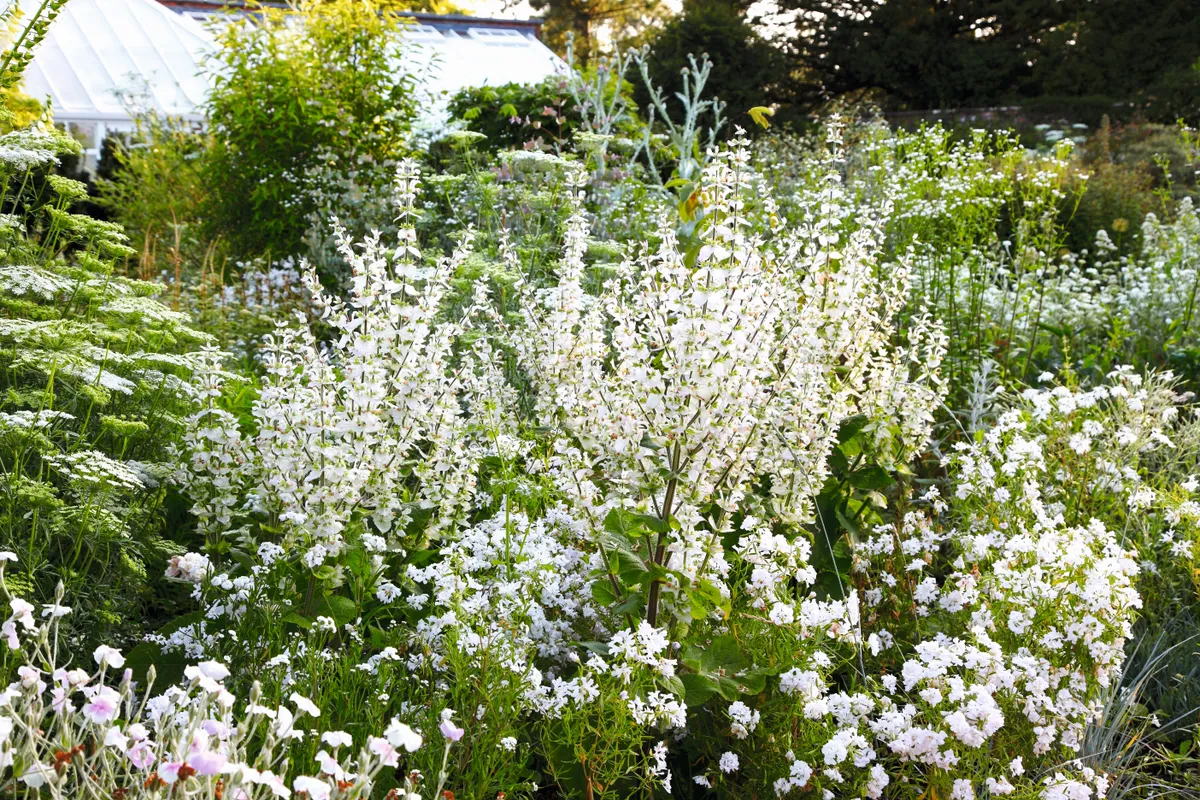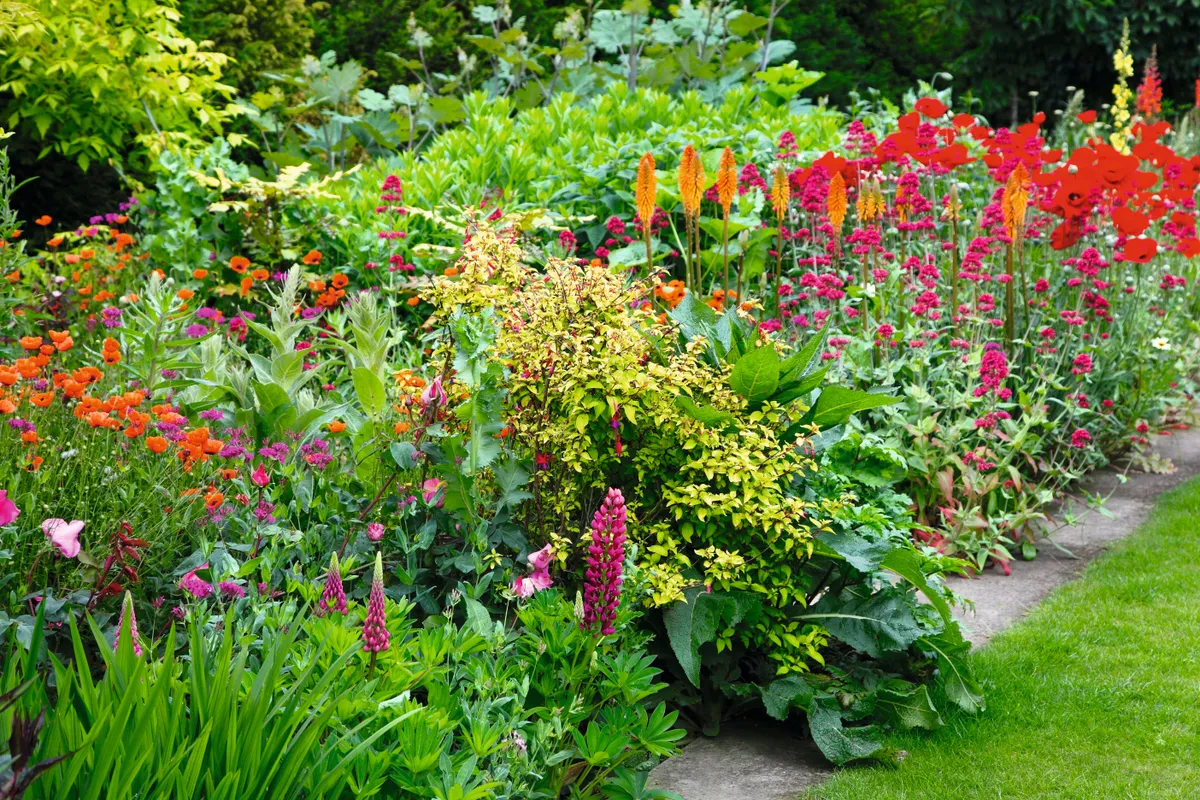Malverleys in Hampshire is a garden filled with colourful drifts of dreamy planting. Its numerous garden rooms allow for variety and makes the garden a wonderful place to explore. Head gardener Mat Reese is the brain behind the design and here you can see four of his stunning plant combinations for summer borders.
You may also like
- 26 beautiful summer flowers to plant
- 60 perfect early summer flowers for the garden
- High summer at Sissinghurst
WEDDING RING BORDER

This border, so-called because Mat once lost his wedding ring here, mixes purples, blues and pinks. Cynoglossum amabile is grown as an annual or biennial, and although known as the Chinese forget-me-not for its colour and family ties, it is summer flowering and 1m tall. Dierama ‘Puck’ is one of the more stocky dieramas, but graceful nonetheless, and the best grower of its tribe, according to Mat. The vivid, dark colour of Salvia nemorosa ‘Caradonna’ is enhanced by the calyces surrounding the petals and is the tallest salvia of its type with a long flowering season. Hordeum jubatum ‘Early Pink’ is an annual, prolifically self-sowing grass. Its progeny has to be culled every year, but this is no great hardship because the roots are insubstantial.
HOUSE BORDER

This predominantly green border near the house is dominated by Euphorbia cornigera and its self-sown progeny. Verbascum lychnitis, the self-seeding male fern Dryopteris filix-mas and Veronicastrum virginicum ‘Fascination’ lend their steeple shapes to this otherwise largely dome-shaped collection of plants. Other self-seeders here include the white Lychnis coronaria ‘Alba’ and Geranium psilostemon . Behind sits Lupinus arboreus ‘Barton-on-Sea’, which is a blue-white form of the shrubby, lax-growing tree lupin. The skill in this style of gardening is in distinguishing seedlings at an early stage and knowing when to give them their head.
THE WHITE GARDEN

In the absence of colour, plant form assumes an ever greater importance. The frothy, flat heads of Ammi majus contrast with the spires of the biennial Salvia sclarea ‘Vatican White’ and, in the background, the giant silver thistle Onopordum acanthium, which both hold sway in June and July. Filling in the gaps in the foreground is the long-flowering Clarkia pulchella ‘Snowflake’, while in the background is Erigeron annuus, whose seedlings must be thinned out, especially as the season progresses. It flowers constantly from June to November, but towards the end of the year starts to assume almost shrub-like proportions.
THE HOT GARDEN

The importance of foliage in bold colour schemes, such as this, cannot be overstated – plenty of green and silver help us to digest all the strong colour. Acer negundo ‘Kelly’s Gold’ and Verbascum gnaphalodes, with its silvery leaves and soft yellow flowers, help to cool things down a bit, while the pewter of the plume poppy Macleaya cordata and the golden leaves of Fuchsia ‘Genii’ leaven the hot colours of Kniphofia ‘Fiery Fred’, Centranthus ruber and the tall, intensely scarlet Papaver glaucum, the tulip poppy, which set the tone for this border with its vibrant clash of hot colours.




